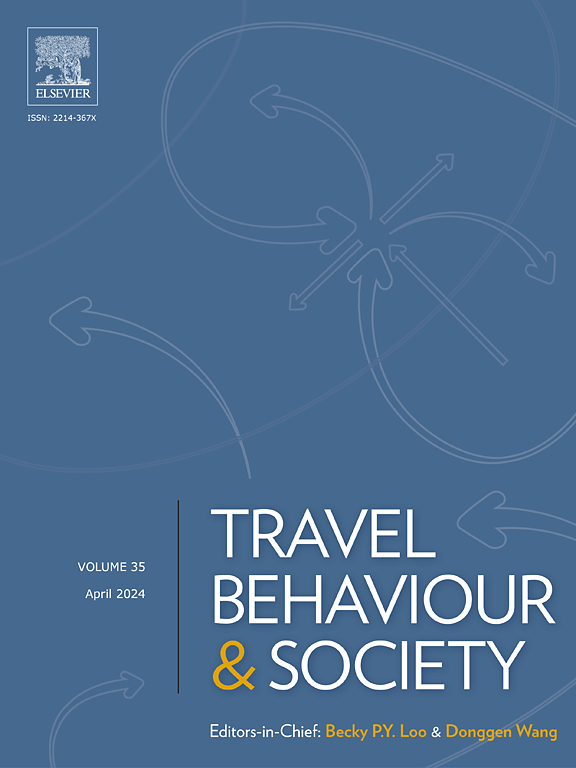Reallocation of time after an exogenous reduction in mandatory travel: transport, work, and leisure in Chilean two-worker two-gender households
IF 5.1
2区 工程技术
Q1 TRANSPORTATION
引用次数: 0
Abstract
A two-step model framework is proposed and applied to analyze empirically the impact of a travel time reduction on labor supply in two-worker two-gender households, using a nationwide data set for time use collected in 2015 in Chile. First, a system of structural equations (SSE) is estimated to reveal which activities can be considered as committed, and to unveil the hierarchy of activities by gender undertaken by the household workers to help defining the labor supply model. Then a quadratic formulation including committed time for each individual and committed expenses for the family is applied to the time-use data to estimate a labor supply model, considering the findings with the SSE (hierarchy and committed activities). Results were obtained controlling for household size, region, and age, showing systematically that labor supply diminishes with the wage rates of either working member of the household (a forward falling shape), that committed expenses induces more work, and that diminishing mandatory travel time induces an increase in working hours that varies between 27 and 64 percent of the liberated time, in line with 2023 reports on the reallocation of liberated travel time due to remote working and confirming the theoretical findings by Jara-Diaz and Contreras (2024).
外因导致强制旅行减少后的时间重新分配:智利双职工双性别家庭的交通、工作和休闲问题
本文提出了一个两步模型框架,并利用 2015 年收集的智利全国时间使用数据集,对双职工双性别家庭减少出行时间对劳动力供给的影响进行了实证分析。首先,对结构方程系统(SSE)进行估计,以揭示哪些活动可被视为承诺活动,并揭示家庭工人按性别开展活动的层次结构,以帮助定义劳动力供给模型。然后,考虑到 SSE 的结果(层次结构和承诺的活动),将包括每个人承诺的时间和家庭承诺的支出在内的二次公式应用于时间使用数据,以估算劳动力供应模型。结果显示,劳动力供给随家庭中任一工作成员的工资率的增加而减少(呈正向下降趋势),承诺的支出导致更多的工作,强制性旅行时间的减少导致工作时间的增加,工作时间占自由时间的 27%到 64%不等,这与 2023 年关于远程工作导致自由旅行时间重新分配的报告一致,并证实了 Jara-Diaz 和 Contreras(2024 年)的理论发现。
本文章由计算机程序翻译,如有差异,请以英文原文为准。
求助全文
约1分钟内获得全文
求助全文
来源期刊

Travel Behaviour and Society
TRANSPORTATION-
CiteScore
9.80
自引率
7.70%
发文量
109
期刊介绍:
Travel Behaviour and Society is an interdisciplinary journal publishing high-quality original papers which report leading edge research in theories, methodologies and applications concerning transportation issues and challenges which involve the social and spatial dimensions. In particular, it provides a discussion forum for major research in travel behaviour, transportation infrastructure, transportation and environmental issues, mobility and social sustainability, transportation geographic information systems (TGIS), transportation and quality of life, transportation data collection and analysis, etc.
 求助内容:
求助内容: 应助结果提醒方式:
应助结果提醒方式:


